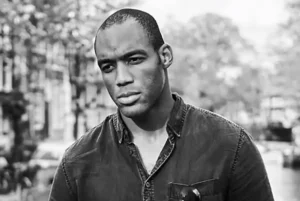
All across┬ĀWaller County, and in fact around the state, sit abandoned cemeteries containing the remains of African-Americans who where denied burial in predominantly White cemeteries.┬ĀPrairie View A&M College, took up the responsibility for interring the remains of its employees, just as they assumed the tasked of educating of Black school children from the local school district.
Just as the university continues to provide the local school district a facility for educating the districts youth, albeit for only a dollar a year, they also continue to provide a final resting place for local residents.
Former university president,┬ĀDr. E. B. Evans; foreign language instructor,┬ĀOlivette Higgs; local community and campus physician,┬ĀDr. E.R. Owens; U. S. Olympic track coach┬ĀHoover Wright; and the legendary┬ĀŌĆ£Marching StormŌĆØ┬Āband director┬ĀGeorge Edwards┬Āhave been laid to rest here. Chances are, if you went to┬ĀPrairie View A&M University┬Āanytime after 1960, you are familiar with at least two of these pillars of the local college which sitsŌĆ£on the hillŌĆØ┬Āin the City of Prairie View. But could their┬ĀŌĆ£finalŌĆØ┬Āresting place be in jeopardy?
Local minister┬ĀRev. Walter Pendleton┬Āis currently disputing with the Texas A&M University system regarding the ownership of the campus-based cemetery. The minister claims the land in which almost two hundred former campus employees and their families have been interred, was merely offered as a gesture of friendship by his grandfather,┬ĀGeorge T. Wyatt.
Adjacent to the university maintained cemetery sits the┬ĀWyatt Cemetery, a Texas historical site, containing the grave sites of former slaves who were most likely from the local┬ĀLiendo, Alta Vista┬Āand┬ĀGrace┬Āplantations.
Pendleton and many other local Waller County residents are direct descendents of many who are buried in both cemeteries.
Pendleton recently addressed a letter to A&M System employees, demanding the return of the property, and he says he has the ownership deeds to back up his claims. This is not the first cemetery dispute in which the minister has been embroiled. Almost a decade ago, Pendleton filed a federal lawsuit against the nearby city of Hempstead, claiming discrimination in the upkeep of the cityŌĆÖs three cemeteries. The city settled out of court and agreed to bring the local Black cemetery up to par with the much better maintained White and Jewish cemeteries.
This dispute may be more personal. Earlier in the year Pendleton says the university banned him from coming to campus┬ĀŌĆ£for lifeŌĆØ. The minister has protested at the universityŌĆÖs commencement programs for various reason and for many years, but according to Pendleton, his wife had her employment as a result of her disability, and Pendleton claims it is also a result of his activism.
ŌĆ£Not so,ŌĆØ┬Āsays university president┬ĀGeorge Wright.┬ĀŌĆ£I think you should contact the local Chief of Police. You will see that is not the case. He was even at the recent commencement,ŌĆØ┬ĀWright adds.
ŌĆ£My brother and uncles are buried here,ŌĆØ┬Āsays Pendleton who still occasionally frequents the site,┬ĀŌĆ£and IŌĆÖm barred from even visiting their graves.ŌĆØ ŌĆ£If I canŌĆÖt come here, then the system should just return the property to the family which owns it.ŌĆØ┬ĀHe adds,┬ĀŌĆ£Just because the state ran a road between the two cemeteries, doesnŌĆÖt mean they own it. If the road were removed, weŌĆÖd probably find even more graves of┬Ā slaves.ŌĆØ

The cemetery has been managed by the university for decades. There is no fee for a burial plot, but those interred must be former employees, or their relatives.
ŌĆ£Look at the fence and the bridge, if you can call it that!ŌĆØ┬Āsays Pendleton.┬ĀŌĆ£If they really thought they owned this property, would they allow a fence to look like that?ŌĆØ ŌĆ£Take a look at the fence theyŌĆÖre building at the local elementary school (which sits on the campus). Waller ISD has paid the A&M System one dollar a year for 50 years. At least they finally got a nice fence. Yet these men and women who gave their lives to building this institution, and who settled their families in the community canŌĆÖt get a safe bridge to drive across, or a fence without trees growing between itŌĆÖs chain links. I know I can manage my grandfatherŌĆÖs property better than the system can,ŌĆØ┬Āsays Rev. Pendleton.
This dispute between the local minister and the Texas A&M University system may just find its way into a federal courtroom, and if history repeats should repeat itself, the peaceful resting places of many, could be very unsettling.
BUT JUST WHO DOES OWN THE CEMETERY?
The old slave-era burial ground bears the name,┬ĀWyatt Chapel Community Cemetery.┬Ā Rev. Pendleton is the great grandson of Texas legislator G.W. Wyatt, the cemeteryŌĆÖs namesake.
ŌĆ£I have uncles and aunts buried on both sides of this road. And I bet if you dig up that road the state put in between the two (properties), youŌĆÖd find some more of my people.ŌĆØ
Wright was less sure of the ownership.┬ĀŌĆ£The better question is, ŌĆśis the university involved in burying people at the cemetery? IŌĆÖd say no,ŌĆØ┬Āsays Wright. He then adds,┬ĀŌĆ£IŌĆÖve never been involved in it, and no one has ever come to me to ask to be buried there.ŌĆØ
This is surely a topic that area residents would love to see, be laid to rest.








